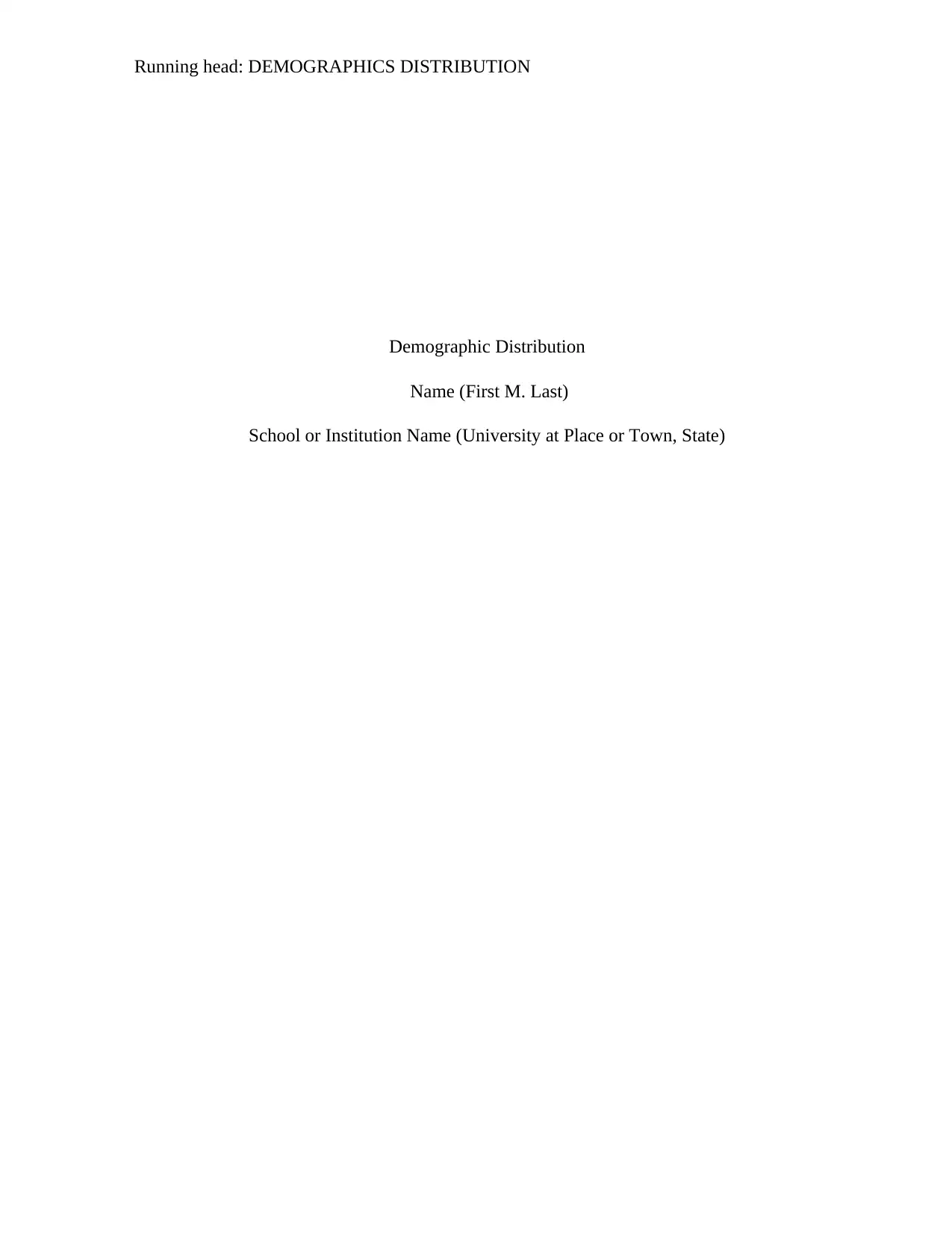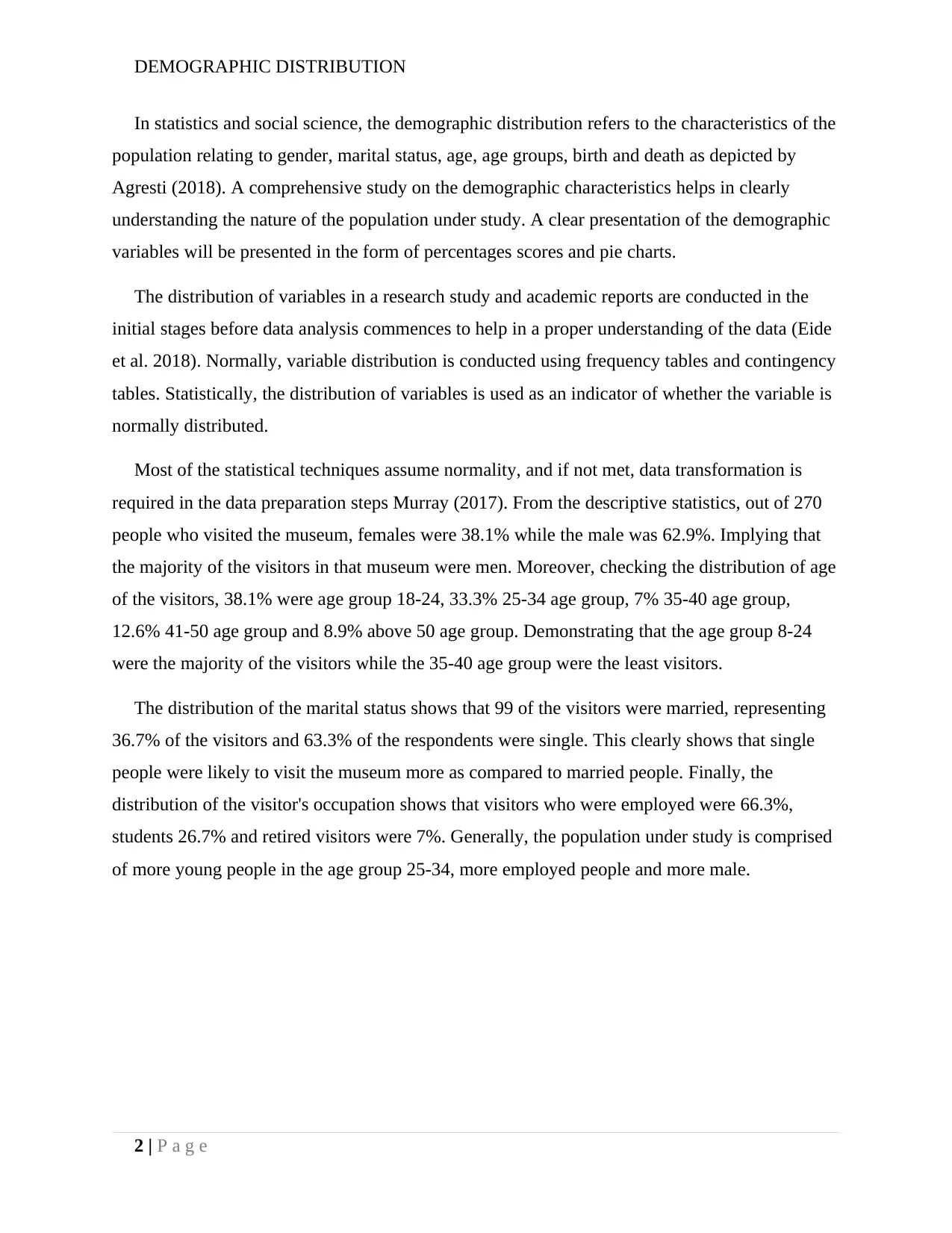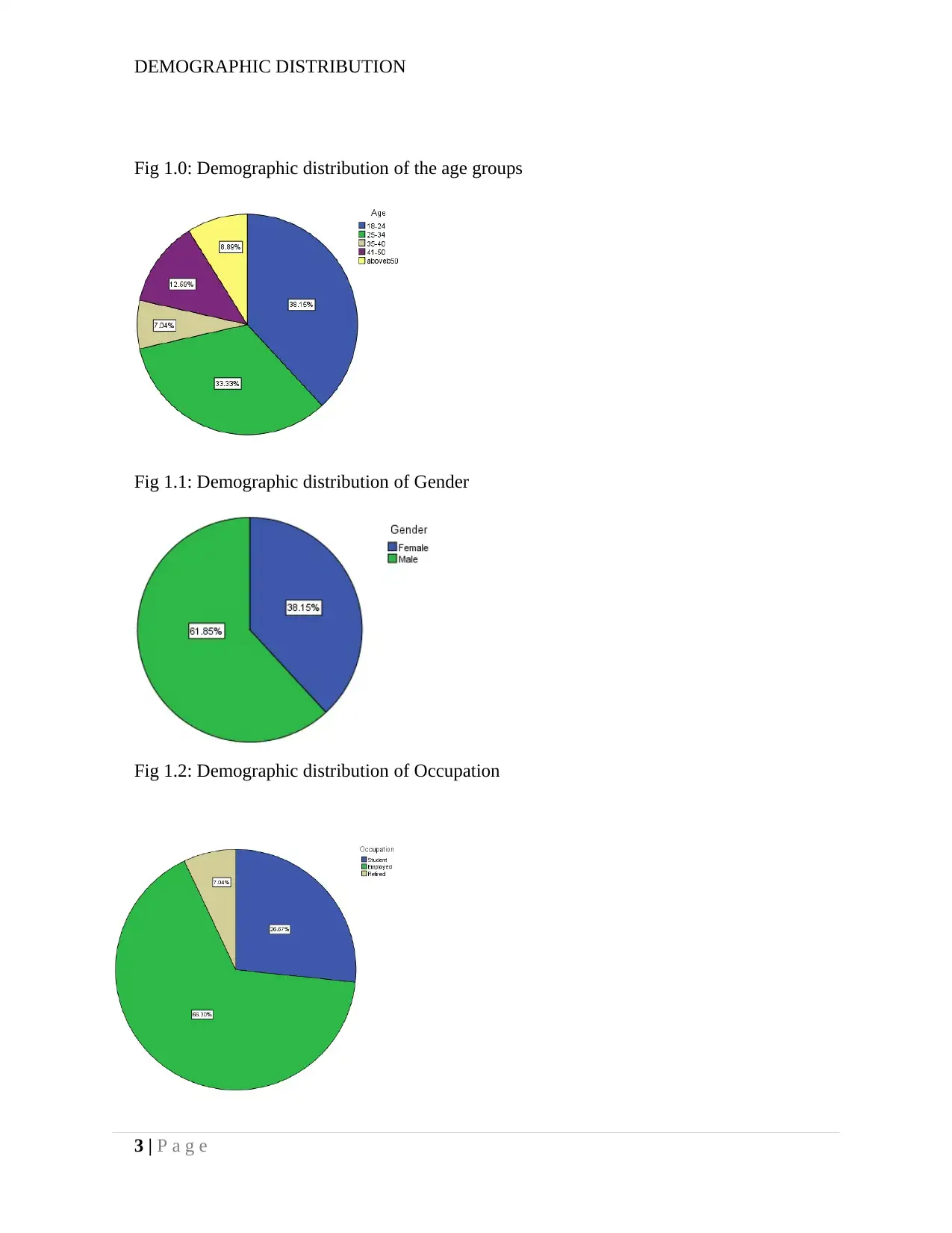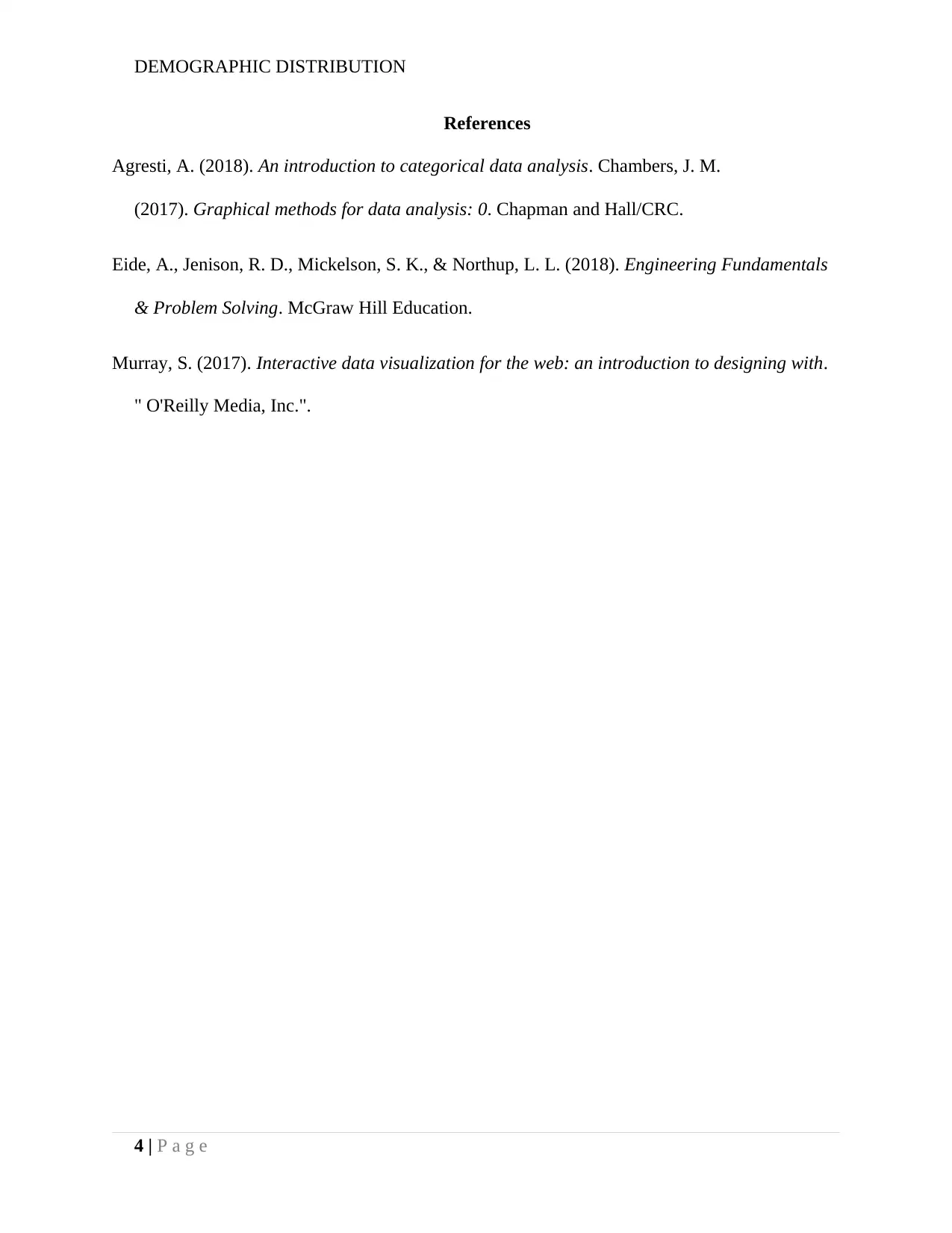Analysis of Demographic Distribution in Museum Visitor Survey
VerifiedAdded on 2022/08/14
|4
|530
|15
Report
AI Summary
This report analyzes the demographic distribution of 270 museum visitors based on a survey. The analysis covers gender (62.9% male, 38.1% female), age groups (18-24, 25-34, 35-40, 41-50, and over 50), marital status (36.7% married, 63.3% single), and occupation (66.3% employed, 26.7% students, 7% retired). The report presents these distributions using percentages and pie charts, highlighting that the majority of visitors are male, in the 18-24 age group, single, and employed. The assignment also involves comparing pre-trip expectations with post-trip perceptions, although that part is not present in the provided solution. The report also includes the references used in the analysis.
1 out of 4











![[object Object]](/_next/static/media/star-bottom.7253800d.svg)